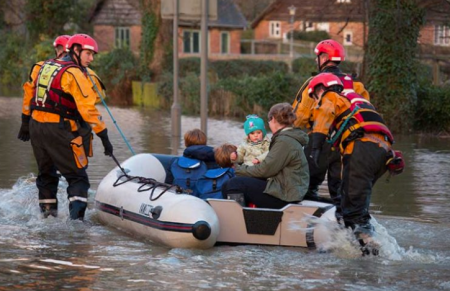Safety During a Disaster
Evacuation
Sometimes, local officials will announce when weather emergencies are serious enough for people to leave their homes. Other times, you may choose to leave to avoid situations that are difficult or dangerous. When community evacuations are necessary, local officials provide information through emergency broadcast alerts, TV or radio announcements, sirens, text alerts, emails, or telephone calls.
Preparing to Leave
Use these checklists to help you plan to leave your home and minimize damage while you are away. Make sure you have a full tank of gas and a stocked emergency car kit before you hit the road.
What to Pack
Pack supplies ahead of time in an easy-to-carry bag so your family can be ready to go.
- Change of clothes and footwear
- Sleeping bags, blankets, pillows
- Cell phone, chargers
- Medications and supplies/equipment: denture needs, crutches, prostheses, first aid kit
- Contact lenses and supplies
- Extra pair of eyeglasses
- Hygiene and toiletry supplies
- Baby food, formula, disposable diapers, toys
- Extra sets of keys
- Cash/travelers checks/credit cards
- Driver’s license or identification for everyone in the family
- Homeowner’s/rental insurance agent’s telephone number
- Health insurance cards and health provider contact information
- Phone numbers of family and friends
- Important documents: insurance policies, social security cards, passports, deeds/leases, wills, vehicle registrations, tax returns, birth and marriage certificates, etc.
- Pet supplies and documentation including carrying cases, medications, food, water
Shutting Off Your Water
If the inside temperature could drop below freezing (320F) for many days, you should turn off the water at the main valve. Shutting off your water prevents pipes from freezing and causing water damage to your home.
- Shut off electric and gas to your hot water tank BEFORE turning off your main water service valve to avoid the risk of a fire or damaging your hot water tank. Unless local officials advise otherwise, you do not need to shut off the main natural gas line to your home. If you shut off the main natural gas line, a licensed professional is required to turn it back on and it may take weeks for them to be available.
- Drain your plumbing after turning off your water by turning on the hot and cold water faucets in the home until the water drains from the water tank completely. Leave all water faucets in the on position.
- Flush and remove water from the toilet bowl to prevent freeze damage.

If You Have to Evacuate
Before you evacuate your home, make sure your emergency car kit is stocked and you have a full tank of gas. Stay informed by checking your emergency information sources, and follow safety and travel instructions provided by local officials.
Travel Safety Tips
Never drive around barricades. Find an alternate route.
If your car stalls in rapidly rising water, abandon it immediately and get to higher ground.
Always let someone know where you are heading in case you get stuck or stranded. Let them know your planned route and when you expect to arrive. This way, if your car gets stuck, help can find you.
Plan for alternate routes and extra time. Be alert and carry a map and compass in your car. Do not rely on GPS or online maps for road closures and accidents, particularly during an emergency when online services could be unavailable.
If You Get Stuck or Stranded
Stay in your car. Do not try to walk to safety unless there is rapidly rising water or the outside temperature is extremely hot. In those cases, abandon your car immediately.
Use a fluorescent distress flag to help rescuers find you.
Keep a window cracked away from blowing wind to let in air.
If It’s Hot
Do not remain in a hot car or leave children, pets, or people with mental or mobility limitations in a parked car, even briefly.
A car can reach deadly temperatures even when the outside temperature is in the 60s. See Extreme Heat Advice
If It’s Cold
Start the car and use the heater for 10 minutes each hour. This will provide heat and help recharge your car’s battery. Keep the exhaust pipe clear so exhaust doesn’t back up inside the car. Never run your vehicle in an enclosed space or garage because it releases deadly carbon monoxide.
When the engine is running, leave the overhead light and emergency flashers on to help the car be seen. Turn them off when you turn the engine off.
Keep extra blankets and clothing in your car.
Keep your arms and legs moving to stay warm.
